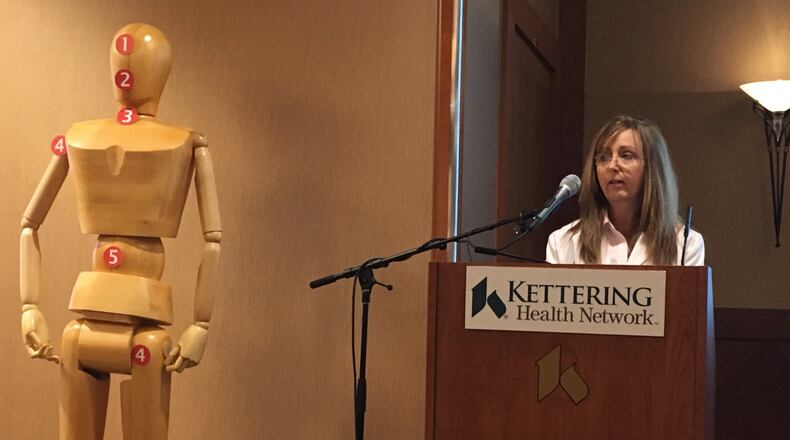As the region’s opioid crisis intensified through the first half of this year, Montgomery County hospital emergency departments received 2,565 overdose patients — more than any other Ohio county. In all, Ohio emergency departments treated 19,128 overdoses during the period, including 2,204 in Cuyahoga County, the state’s most populous.
The state also has guidelines for treatment of chronic pain. Ohio Mental Health & Addiction Services' guidelines encourage providers to assess whether they are in compliance with prevailing standards of care. The guidelines also ask providers to look into non-opioid therapy options and avoid long term prescribing opioids.
The network program includes a handout and an online guide that outlines alternatives to opioids for treating five key types of pain: chronic benign headache, chronic dental pain, chronic neck or back pain, chronic joint pain, and chronic abdominal pain. It has a list of a non-opioid prescriptions for each key type of pain.
The program gives providers factors to consider when deciding what prescriptions are appropriate, like age, the risk benefit ratio and unresolved behavioral health conditions. The program also has guidelines for providers to consider nonprescription opioid treatments like assistance with weight loss, diet change, massage therapy or physical therapy, which can each help with treating certain pain triggers.
RELATED: Montgomery County OD crisis: ‘We are nowhere near achieving our goal’
Dr. Nancy Pook, emergency department medical director at Kettering Medical Center, said the network is embedding the program in its electronic medical record education, putting posters in ERs, training its medical teams, and tracking reports of opiate prescribing.
“As prescribers, we need to be particularly thoughtful so that we do not contribute to the start or restart of an addiction,” Pook said at the press conference.
She said the program lets clinicians learn how to avoid narcotics whenever possible. The reference material is posted publicly online for anyone to use and can be used by physicians, by pharmacists to guide prescribers to alternatives to opioid painkillers, and by health care organizations that want better pain management strategies.
She said besides the 20 percent drop in opiate use in the network since the program started in 2013, repeat visits for emergency visits for minor pain complaints have decreased by more than 50 percent.
Pook said they’ve been working with the insurers, trouble shooting issues as they arrive like switching to a generic prescription instead of a name brand in one case where there was a price point issue.
State Senator Peggy Lehner spoke at the press event and said the current opioid crisis is a serious issue facing the state and particularly the Dayton area. She said the legislature, medical community and law enforcement have been working together to respond to the crisis.
“While the root causes of this crisis are many, unfortunately some of the blame can be found in the medical field itself. And I’m not saying that as an outsider, I’m saying that as the wife of a surgeon for 47 years,” said Lehner. “Many addicted to heroin and other opioids report that they first got hooked by over-prescribed medicines such as oxycodone.”
More than 13 percent of all Ohio drug overdoses treated in emergency rooms through June of this year were in Montgomery County hospitals, according to state health statistics revealed by the county’s Community Overdose Action Team.
Deaths from accidental overdoses in Montgomery County rose so fast earlier this year that by June deaths exceeded the 349 of 2016 and health officials were bracing for up to 800 dead. But since May, when 80 people died, the preliminary number of overdose deaths has fallen month over month: 52 in June, 40 in July and 38 in August, for a total of 464.
Law enforcement and health officials said at the time they weren’t exactly sure why the overdoses are declining, but say a number of local efforts — including a community-wide collaborative response to the crisis — may be moving the needle.
About the Author
